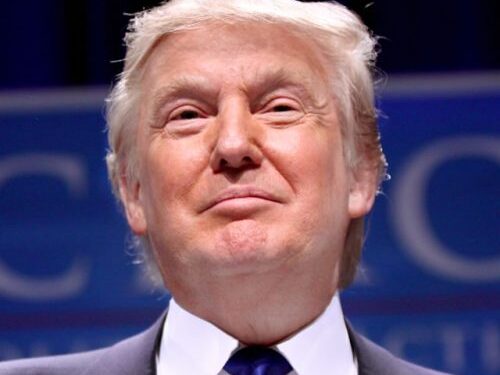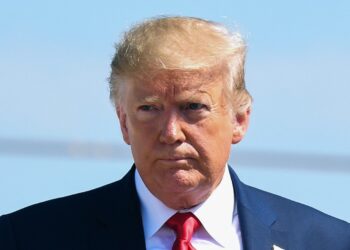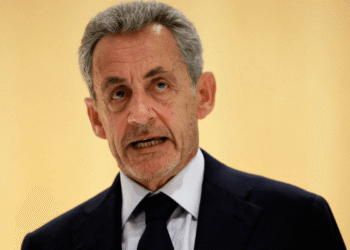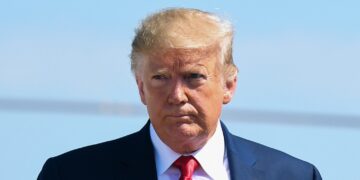Donald Trump’s return to the White House in 2025 – while met with mixed emotions from Americans and the world at large – was marked by an audacious promise: to govern with unparalleled speed, bypassing bureaucratic inertia to deliver swift changes. Yet, just 100 days into his second term, the Trump administration’s breakneck pace has yielded as much chaos as accomplishment – if not more. From legal battles over executive overreach to economic woes sparked by erratic trade policies, Trump’s agenda has collided with institutional resistance, public dissent, and self-inflicted missteps.
This article looks at the defining issues of his second term – a period characterized by relentless action, polarizing outcomes, and a nation struggling to keep up with his controversial laws.
Executive Overreach and Legal Backlash
Trump’s reliance on executive orders has been a hallmark of his presidency, but his second term has seen these actions face fierce judicial and public scrutiny. His efforts to reshape immigration policy (including mass deportations and ending birthright citizenship) were swiftly blocked by courts, with one high-profile case involving the erroneous deportation of a Maryland man to El Salvador. Similarly, an order placing independent agencies like the FEC and FCC under White House control was challenged as unconstitutional, with critics arguing it undermined checks and balances.

The administration’s aggressive downsizing of the federal workforce, spearheaded by Elon Musk’s controversial “DOGE” (Department of Government Efficiency), also backfired. Mass firings led to collapsed services, with Social Security call wait times skyrocketing to an alarming 28%. The courts themselves rebuked the process as “move fast and break things… if that involves breaking the law” . These clashes reveal a tension between Trump’s ambition and the limits of presidential power, with 78% of Americans insisting his administration must adhere to court rulings.
Economic Volatility and Trade Wars
Trump’s trade policies dominated his second-term agenda, but their implementation has been rife with confusion and collateral damage. Sweeping tariffs, including a 145% levy on Chinese goods, triggered market crashes and retaliatory measures. Even allies like Canada were left scrambling after abrupt tariff reversals.
Public disapproval is glaring: 59% oppose the tariff hikes, while 45% expressed their declining confidence in Trump’s economic stewardship. This is a notable drop from his first term. Trump’s administration has however, defended the measures as necessary to address trade imbalances, but the lack of a coherent long-term strategy has left businesses and consumers grappling with instability.
Ethical Quandary and “The Looting of America”
Trump’s second term has also been dogged by allegations of corruption, with critics decrying a “pay-to-play” culture. Billionaire allies like Elon Musk and Commerce Secretary Howard Lutnick have blurred lines between government and private interests, from Musk’s $100 million political investments to Lutnick’s promotion of Tesla stock while his firm held $555 million in shares. The acceptance of a $400 million Qatari jet as a “gift” for Air Force One (this was later earmarked for Trump’s presidential library) further fueled ethics complaints, flouting constitutional emoluments clauses.
Meanwhile, Trump’s family already monetized political access, with Don Jr.’s $500,000-a-member “Executive Branch” club and Mar-a-Lago dinners priced at $5 million per seat. A move, experts have warned that could represent “one of the worst conflicts of interest in our nation’s history,” eroding public trust.
Polarizing Social and Environmental Policies
The administration’s cultural battles intensified, with executive orders targeting diversity programs, gender-affirming care, and higher education. Federal DEI initiatives were abolished, while an order banning gender-affirming care for minors was blocked by courts as discriminatory. Universities like Harvard and Columbia faced funding threats over alleged “antisemitism,” though judges later ruled the actions violated due process.
Environmental reductions have also sparked backlash. The Supreme Court sided with fossil fuel companies against California’s emissions laws, while the administration unilaterally extended the lifespans of Michigan coal plants (against local opposition) that produce 45% of the state’s greenhouse gases. These moves align with Project 2025’s playbook, despite Trump’s claims of distance from the Heritage Foundation’s agenda.
Global Alienation and Unpredictability
On the world stage, Trump’s “America First” approach has strained alliances. His administration’s withdrawal from the WHO (for the second time) and a freeze on global health funding disrupted HIV and malaria programs, with waivers granted only after legal pressure. Proposals to annex Canada or Greenland, were made alongside abrupt aid cuts to Ukraine, all of which left allies questioning how trustworthy and reliable the United States truly was in this new administration.
Foreign leaders now view Trump’s unpredictability as a “new reality,” forcing them to cautiously navigate a U.S. whose divisions are “deeply gendered and economic”.
Conclusion: A Presidency Tested
Trump’s second term is full of contradictions. He’s taking bold action, but legal troubles, ethical concerns, and real-world challenges keep getting in the way. His supporters love that he’s shaking things up, but most Americans (59%) disapprove of how he’s handling the job. Many worry his approach is damaging democratic traditions.
The big question now is: Will Trump’s aggressive style actually achieve lasting results, or will he be remembered mostly for the chaos he created? And can the country’s institutions (like Congress and the courts) hold up under the strain, or will they come out weaker than before?

















